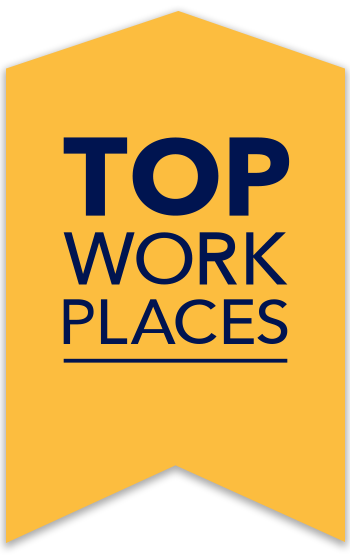Employee training and development is a smart investment, and for a good reason. It’s essential to long-term success, from retaining top talent and employee engagement to innovation, productivity, and keeping pace with the skills needed to achieve company goals. It’s also an effective way to attract top talent.
There are many types of training and development programs, but what is best for one company is different from the next. Let’s take a closer look!
What are workplace training and development programs?
Employee training and development programs teach people new skills to succeed in their current roles. Great training and development programs prepare employees for future roles by offering reskilling and upskilling opportunities and inspiring others to grow towards leadership positions.
Quite often, new hires receive the most learning opportunities. But it’s essential to provide professional development opportunities to more tenured employees. All employees, no matter their position, want to work for organizations that help them to improve their knowledge and skills. It also shows them that the company values them as individuals.
Employee training and development programs create adaptable, engaging, and supportive work environments, which attract and retain top talent. It’s a win-win for everyone involved, and organizations that embody a culture of continued education will see more rapid growth.
11 types of training and development programs
Every business will have different employee training and development needs, depending on its activities and size. The following list includes the eleven main types of training programs for employees:
- Diversity training
- Orientation
- Onboarding
- Technical skills development
- Compliance training
- Sales training
- Soft skills development
- Products and services training
- Quality training
- Safety training
- Team training
Diversity training
Organizations are prioritizing workplace diversity, equity, and inclusion training. These programs inspire organizational growth by encouraging differences and unity among employees. Diversity training helps employees navigate different opinions, understand other perspectives, and minimize discrimination and prejudice.
Steps to set up diversity training include:
- Conduct assessments to identify barriers
- Review and analyze assessments
- Define the program and its goals
- Identify an expert to run the program
- Make participation mandatory
- Focus on the long-term plan
- Evaluate progress
- Evolve with organization and employee needs
Orientation
Orientation is the first opportunity for organizations to train new employees. It’s a great way to introduce new hires to their role and how they fit into the company culture. New employee orientation sets the overall employee experience, so organizations must nurture a culture of continued growth from day one.
Standard orientation programs should cover:
- Corporate culture
- Mission, vision, and values
- Organizational structure
- Leadership team
- Corporate policies
- Administrative procedures
- New hire paperwork
- Benefit plans
- Future training opportunities
Onboarding
There are many new employee training program examples, including orientation. Onboarding is the more extensive series of events that help new employees become productive team members. The onboarding timeline looks different for each employee and team, depending on experience, learning pace, and job skills.
Ensure your company’s comprehensive onboarding training programs give new employees the tools and resources they need to succeed. Employee onboarding starts on the first day and continues until the individual settles in their role. It’s an excellent opportunity for employees to connect daily tasks with the company’s mission and vision.
Technical skills development
Next on the list of examples of training plans for employees is developing technical skills. It doesn’t matter how experienced someone is; everyone can develop new skills to improve their performance. Organizations must provide every employee with the technology and tools necessary to do their job well and ensure the technical skills development program evolves with business growth.
Different roles and responsibilities require additional technical skill development. These include:
- IT and computer programming
- Content writing
- Social media and marketing
- Data analysis
- Coding
- Management
- Sales
- Web Design
Compliance training
Compliance training programs are helpful for employees, but they’re also required by law. This type of training covers the regulations applicable to the workplace and specific roles. Effective employee compliance training programs teach employees about their legal obligations and organizational rules.
Compliance training programs teach employees about topics such as:
- Anti-harassment
- Business ethics
- Cybersecurity
- Diversity
- Government regulations
Every company and industry has different legal obligations, so it’s crucial to provide employees with compliance training programs that cover everything they need to know. It will ensure proper governance and create a safer work environment.
Sales training
Sales training programs help employees navigate customer-facing communication, develop persuasion skills, and promote a positive brand reputation. Companies selling a product or service must offer continuous training opportunities that connect the sales team to the business mission, customers, and product development. Great sales training programs will evolve seamlessly with an organization and its growth.
Soft skills development
Employee training and development programs focused on soft skills play an essential role in individual and organizational growth. Collaboration and productivity soar when employees understand how to use these skills effectively. Some of the many types of soft skills training and development programs include:
- Communication styles and skills
- Critical thinking and problem solving
- Active listening
- Decision making
- Negotiating skills
- Conflict resolution
- Emotional intelligence
- Change management
- Time management and organizational skills
Products and services training
This training and development teach employees the information they need about the products or services they represent. Educating everyone — from individual contributors to the leader team — creates a universal understanding and connection to the company mission, brand unification, and improved customer service experience.
Components of products and services training include:
- Product or service offerings
- Instructions
- Additional benefits
- New features
- Care and maintenance
- Prices
- Warranties
- Product adoption
- Marketing strategies
Quality training
Production companies use quality training programs to ensure all production facilities operate safely and follow standards the company, industry, or a third party sets. Quality assurance training improves production by educating employees on what’s required to develop customer loyalty and satisfaction.
Essential quality training topics:
- Low-quality elimination and prevention
- Quality control tools and processes
- Product observation
- Quality standard compliance
- Product system evaluation and improvement
Safety training
Safety is a priority for most organizations, especially those industries such as manufacturing and healthcare. Workplace safety training programs protect people from dangerous materials, diseases, injuries, natural disasters, and violence. Companies with more workplace hazards have an increased need for safety training.
Examples of safety training opportunities include:
- Asbestos and other similar threats
- Construction safety
- Emergency planning
- First aid
- Foodservice safety
- Protective precautions
Team training
Team training and development programs improve cohesion and strengthen relationships. They’re a great way to boost interpersonal communication and encourage team growth. These topics help employees work better together:
- Collaboration
- Leading innovation
- Productivity and efficiency
- Interpersonal relationships
- Team synergy and effectiveness
Employer recognition awards for excellent training & development
Top Workplaces awards celebrate organizations that drive a people-first culture. Based entirely on employee feedback, the employer recognition program includes regional, culture excellence, and industry awards. Here are examples of companies with the best training programs.
See the Top Workplaces for Formal Training awards.
See the Top Workplaces for Professional Development awards.
Explore why employees want to work for the nation’s Top Workplaces and determine if your company qualifies for employer recognition awards.
If your company invests in employee training and development, get recognized for it! Nominate your organization for Top Workplaces, the employer recognition program that offers awards in 60+ regional markets and national awards for culture and industry excellence.

